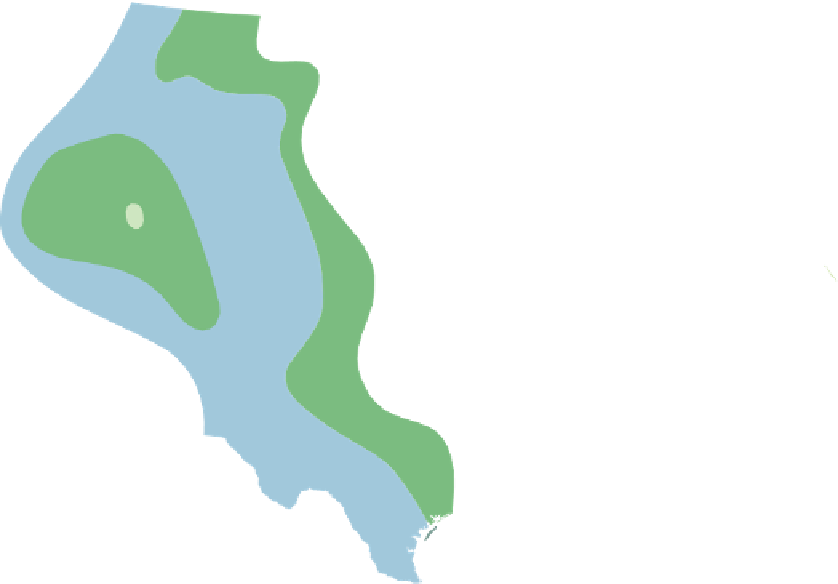Geography Reference
In-Depth Information
Figure 1.7 (continued)
Cultural Landscape
In addition to the fi ve themes, location, human-
environment, region, place, and movement,
landscape
is a
core element of geography. Geographers use the term
landscape
to refer to the material character of a place, the
complex of natural features, human structures, and
other tangible objects that give a place a particular form.
Human geographers are particularly concerned with
the
cultural landscape
, the visible imprint of human
activity on the landscape. The geographer whose name
is most closely identifi ed with this concept is former
University of California at Berkeley professor Carl
Sauer. In Sauer's words, cultural landscapes are com-
prised of the “forms superimposed on the physical land-
scape” by human activity.
No place on Earth is in a “pristine” condition;
humans have made an imprint on every place on the
planet (Fig. 1.8). The cultural landscape is the visible
imprint of human activity and culture on the land-
scape. We can see the cultural landscape in the layers
of buildings, roads, memorials, churches, fields, and
homes that human activities over time have stamped
on the landscape.
experience and give meaning to places, we can have a feel-
ing of “home” when we are in a certain place.
We also develop
perceptions of places
where we
have never been through books, movies, stories, and pic-
tures. Geographers Peter Gould and Rodney White asked
college students in California and Pennsylvania: “If you
could move to any place of your choice, without any of the
usual fi nancial and other obstacles, where would you like
to live?” Their responses showed a strong bias for their
home region and revealed that students from both regions
had negative perceptions of the South, Appalachia, the
Great Plains, and Utah (Fig. 1.7). What we know shapes
our perceptions of places.
The fi fth theme,
movement
, refers to the mobility of
people, goods, and ideas across the surface of the planet.
Movement is an expression of the interconnectedness of
places.
Spatial interaction
between places depends on the
distances
(the measured physical space between two places)
among places, the
accessibility
(the ease of reaching one loca-
tion from another) of places, and the transportation and com-
munication
connectivity
(the degree of linkage between loca-
tions in a network) among places. Interactions of many kinds
shape Earth's human geography, and understanding these
interactions is an important aspect of the global spatial order.














































































































































































































































































































































































